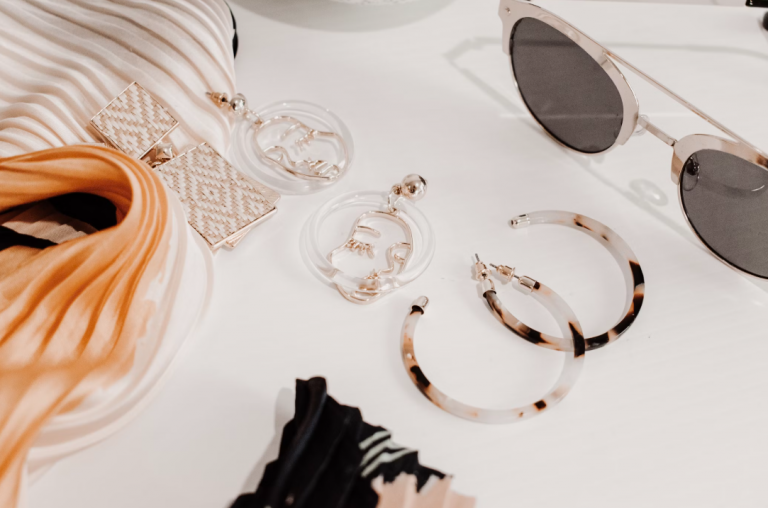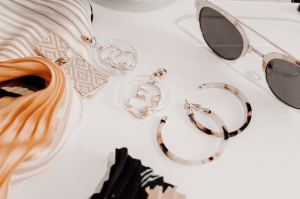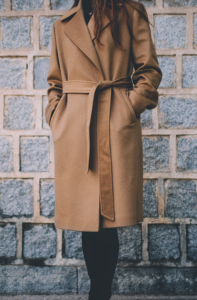Why Texture Matters in Fashion
In fashion, texture plays an incredibly important role. It’s not just about color or cut – the way fabrics feel and interact with each other can elevate a look from basic to breathtaking. Mixing textures allows you to add depth and dimension to your outfits, making even the simplest of pieces appear more interesting and multi-dimensional. The art of blending different textures can transform a mundane ensemble into something unique and visually striking.
Understanding Texture in Clothing
When we talk about texture in fashion, we’re referring to the feel and appearance of fabrics and materials. This could mean the softness of velvet, the sleekness of silk, or the roughness of tweed. But texture is not just about how things feel when you touch them; it’s also about how they look visually. For example, a shiny satin jacket will look different next to a matte cotton skirt, creating a noticeable contrast that adds richness to the outfit.
The Psychology Behind Textures
Textures evoke emotional responses. Think about the difference in how you feel when wearing a cozy wool sweater versus a structured leather jacket. Fabrics like cashmere often feel luxurious and comforting, while tougher textures like denim or leather may make you feel more empowered or bold. Understanding the psychology of textures can help you make informed choices about what to wear, depending on the message or vibe you want to convey.
Key Textures to Mix
There’s a wide variety of textures to choose from when building an outfit. Each one offers a different aesthetic and feeling. Let’s break down some of the key textures you should keep in mind when mixing fabrics:
Smooth Fabrics (Silk, Satin, and Leather)
Silk, satin, and leather are perfect for adding a touch of elegance and sophistication to any look. These materials are smooth, often shiny, and can add a luxe feel to your outfit. Mixing a satin blouse with a rougher, more textured item (like denim) can help create an eye-catching contrast.
Rough Fabrics (Denim, Wool, and Tweed)
On the flip side, rough fabrics like denim, wool, and tweed offer structure and texture. They are more rigid and can make an outfit appear more grounded. Pairing a soft fabric like silk with a more substantial one, like denim, will create an appealing balance between softness and durability.
Natural Textures (Cotton, Linen, and Hemp)
Natural fabrics such as cotton, linen, and hemp are breathable and have a more organic texture. Linen, in particular, tends to have a slightly wrinkled look, which can add a laid-back, bohemian vibe to an outfit. Mixing these with other materials like leather or satin can create a fusion of rustic and refined aesthetics.

Knit and Crochet Textures
Knits and crochet fabrics are great for adding warmth and a handmade quality to your wardrobe. These textures tend to be soft, stretchy, and more tactile. Pairing a chunky knit sweater with sleek leather pants is an example of how textures can work together to create an interesting visual dynamic.
Principles of Mixing Textures
Now that we’ve covered some key textures, let’s dive into the principles of mixing them. Mixing textures is not just about randomly throwing fabrics together. There’s an art to it. Here’s how you can master the process:
Contrast and Balance
One of the most important rules in mixing textures is to create contrast while maintaining balance. For instance, pairing a silky, shiny fabric with something more textured (like wool or denim) can create a striking contrast. Just be mindful not to overwhelm the outfit with too many contrasting textures, as that can make it look disjointed.
Proportions Matter
When mixing textures, the proportions are key. If you’re wearing a bulky textured fabric, like a thick wool sweater, you’ll want to balance it out with something lighter or sleeker. On the other hand, a silky blouse might look better when paired with a pair of structured pants to balance the softness with a bit of edge.
The Role of Color in Textures
While textures are important, the color of the fabrics you choose can influence how well they work together. Monochromatic outfits that mix textures of different shades of the same color tend to be visually appealing because they create harmony. On the other hand, high-contrast color combinations can draw attention to the textures themselves.
How to Mix Textures Like a Pro
If you’re new to mixing textures, it can be helpful to start with a few simple tricks to ease yourself in. Here’s how to mix textures like a pro:
Start Small – Pair a Textured Piece with Simple Outfits
If you’re unsure about mixing textures, start by pairing a single textured piece with simpler fabrics. For instance, try a velvet blazer with a plain cotton t-shirt. This allows you to ease into texture mixing without feeling overwhelmed.
Create a Focal Point with Bold Textures
If you want to create a statement, use bold textures as your focal point. A standout piece, like a leather jacket or a sequined skirt, can serve as the center of attention in your outfit. Pair it with subtler fabrics to let the bold texture shine without overwhelming the entire look.
Experiment with Layering Different Textures
Layering different textures is a great way to create depth and complexity in your outfit. For example, a silk blouse under a chunky knit cardigan, paired with leather pants, can create a cool, eclectic look. Just make sure to balance the volume and weight of each piece.
Common Mistakes to Avoid When Mixing Textures
While mixing textures can be fun, there are a few mistakes that can derail your efforts. Let’s look at some common pitfalls:
Overdoing It – Too Many Textures
One of the biggest mistakes people make is mixing too many textures in one outfit. While variety is great, too many conflicting textures can make an outfit look chaotic. Try to limit yourself to 2-3 textures per outfit to keep things balanced.
Not Considering the Season or Occasion
Some textures are more appropriate for certain seasons or occasions than others. For example, a heavy wool sweater might not be suitable for a summer gathering, and a leather jacket may feel out of place at a formal event. Make sure the textures you choose are appropriate for the context.









+ There are no comments
Add yours